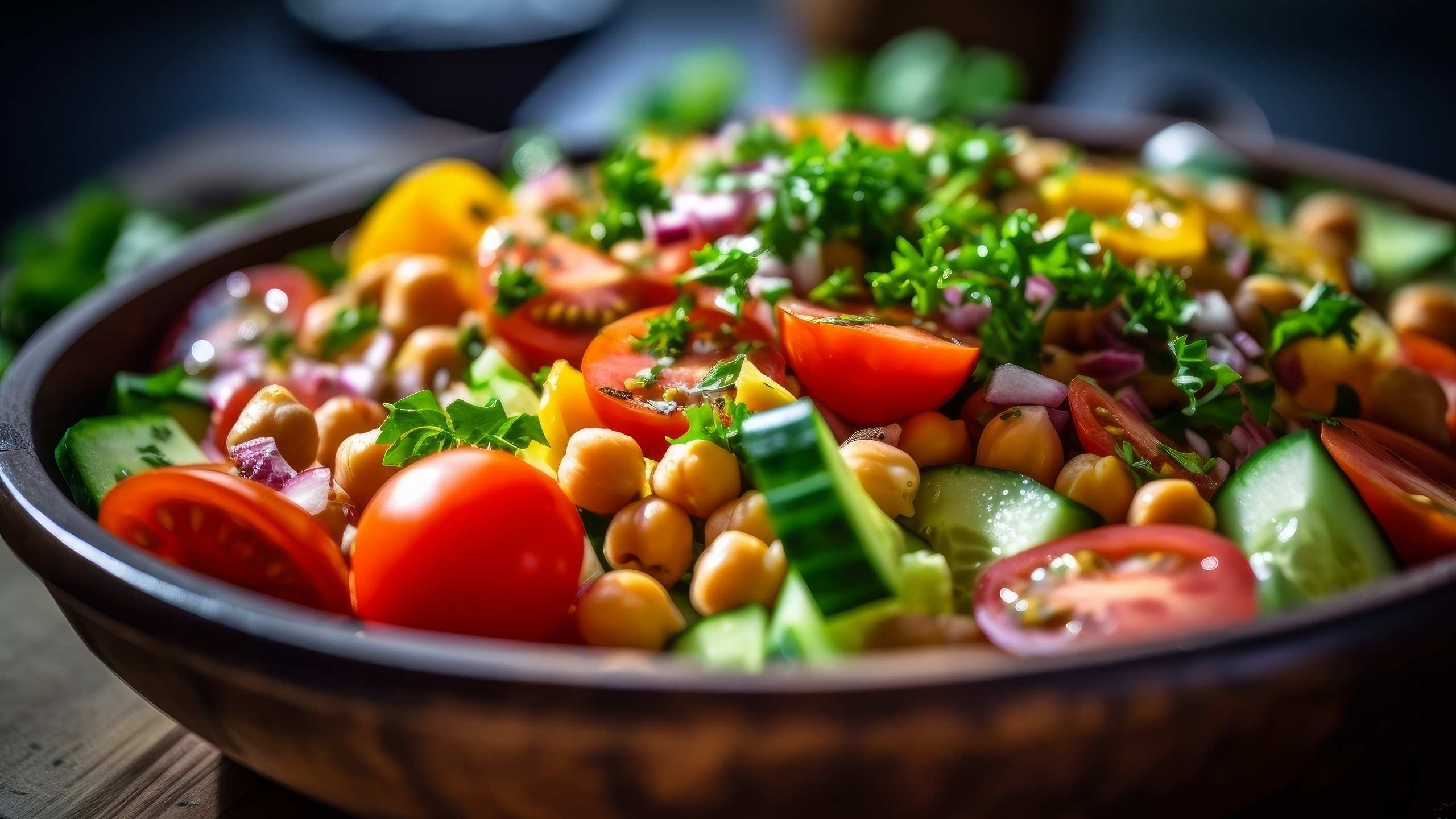
How to read the nutrition facts label?
On every packaged food product, there’s a nutrition facts label, which indicates the amount of fat, protein and other nutrients. If you often frown when you try to understand all the nutritional information, this article will make your next trip to the supermarket easier.
(Too much) Information on the nutrition facts label
Think about your favourite chocolate chip cookie. In its composition, there’s a certain amount of sugar, fat and other ingredients. Besides the taste, how do you know what impact eating this cookie will have on your health? Just read the nutrition facts label on the packaging – an answer that is as simple as it is complex.
Many consumers in Europe have a hard time understanding the nutritional information presented on a food label. In Portugal, a 2021 study showed that consumers read the food packaging but struggle with interpreting the nutrition facts label. When it comes to buying, the list of ingredients (the fewer and the simpler, the better) and specific attributes – lightly processed, locally produced food, no artificial additives, colourings or preservatives, and free of genetically modified organisms (GMOs), for example – are of importance, although it can be challenging to understand all nutritional information.
Beyond the nutritional quality of food, brands and retailers have sought to improve the quality of the nutrition facts label. One way is creating standards that help consumers make the right choices. It is time to understand how to read a food label.
What does the nutrition facts label mean?
Nutritional information is presented on food labels, usually in the form of a table. It indicates the average values of energy, lipids, carbohydrates, sugars, fibre, protein and salt that each 100 g or 100 ml of the food in question contains. Generally, there are also values for the average portion indicated, depending on the food and its Reference Intake (RI) percentage.

-
Energy
Presented in kilojoules (kJ) and kilocalories (kcal), it corresponds to the total caloric value provided by food to the body. It’s common to pay particular attention to calories and evaluate the product according to them, which can be misleading. The human body needs calories, i.e. energy, in order to function, so it’s important to focus on the ingredients and understand which nutrients those calories come from.

-
Lipids
Best known as “fats”, they are essential for transporting vitamins, hormone production, and organ protection. Saturated fats – found in foods such as pastries, cold meats, butter and desserts – should be consumed in smaller quantities, since they contribute to an increase in blood cholesterol levels and a greater risk of cardiovascular disease. Check the nutrition food label and choose products with less saturated fat.

-
Carbohydrates
Unjustly seen as the enemy, they provide muscles and the brain with the necessary energy. They can be divided into two types: simple (monosaccharides and disaccharides) and complex (polysaccharides).
Simple carbohydrates include fructose (present in fruit), lactose (from milk and dairy products), but also sucrose (the name given to the typical “cooking sugar”, present in products such as desserts or soft drinks – a type of carbohydrate to reduce or avoid). Complex carbohydrates include fibre (found in whole grains and cereals, legumes, fruit and vegetables) and starch (found in potatoes and cereals and cereals).
When reading the nutrition food label, check the amount of carbohydrates, including sugars, and choose products with less sugar. Ideally, you should opt for foods whose sugar is naturally present, i.e. without added sugar.

-
Fibre
Fundamental for the control of glycaemia and cholesterol, and the proper functioning of the intestine. It is also a carbohydrate. You should favour foods with a higher fibre content.

-
Proteins
Essential nutrients that promote the growth and maintenance of the human body, proteins are structural components of cells. There are animal protein sources such as meat, fish and eggs, but also vegetable protein sources such as tofu or pulses.

-
Salt
Salt plays an important role in the functioning of the body, being necessary for the activity of the muscles and nervous system. If it is consumed in excess, it can cause blood pressure to rise. Find out how to reduce your salt intake.
How to choose a product based on its nutrition facts label?
We already know what each element of the nutrition facts label means, but how do we know if 10 g of sugar is considered a high amount? Or how to assess whether a yogurt is low in fat? In order to help answer questions like these, the Portuguese Directorate-General for Health has established two label decoders, one for food and one for drinks. For every 100 g or 100 ml, respectively, the amount of fat, saturated fat, sugar and salt present is assessed.
The amount of each of these four nutrients is classified as high (in red), medium (in yellow) and low (in green). The aim is to help identify the most balanced food products, opting for foods and drinks whose nutrients are mostly in the green category, moderating those with one or more nutrients in the yellow category and avoiding those with one or more nutrients in the red category.
We’ve prepared the following illustrations – take them with you next time you’re in the supermarket to help you understand the ingredients in each product.

1. Food (per 100 g): Fat: more than 17.5 g - high; between 3 and 17.5 g - medium; 3 g or less - low. Saturated fat: more than 5 g - high; between 1.5 and 5 g - medium; 1.5 g or less - low. Sugars: more than 22.5 g - high; between 5 and 22.5 g - medium; 5 g or less - low. Salt: more than 1.5 g - high; between 0.3 and 1.5 g - medium; 0.3 g or less - low. 2. Drinks (per 100 ml): Fat: more than 8.75 g - high; between 1.5 and 8.75 g - medium; 1.5 g or less - low. Saturated fat: more than 2.5 g - high; between 0.75 and 2.5 g - medium; 0.75 g or less - low. Sugars: more than 11.25 g - high; between 2.5 and 11.25 g - medium; 2.5 g or less - low. Salt: more than 0.75 g - high; between 0.3 and 0.75 g - medium; 0.3 g or less - low.
Bearing these parameters in mind, and answering the question that started this article, if your favourite chocolate chip cookie has, for example, 30 g of sugar per 100 g, this is high and falls into the red category. This doesn’t mean that you shouldn’t eat them, but you should eat them occasionally and in smaller quantities.
The golden rules of labelling
According to the European Union (EU), food labels should:
- Contain the complete list of ingredients, including any food additives, information on allergens and the number of certain ingredients, presented in descending order by weight. The first ingredient in the list is the one with the highest concentration.
- The percentage of certain ingredients that appear in the product’s name is highlighted on the food label or are essential to characterise the food or distinguish it from other foods. For example, the label of an apple pie should indicate the percentage of apple in the list of ingredients.
- Indicate allergens clearly and distinctively from other ingredients by using a different font/size or background colour.
- Use the word contains to present the allergens (e.g. “contains gluten”) if no list of ingredients is provided.
Origin, preservation, and instructions
In addition to nutritional, ingredient, and allergen information, food labels should also contain information on the weight or net volume, country of origin, name and location of the producer, special conditions of use and storage (e.g., “store in the refrigerator after opening”), as well as instructions for use.
Nutritional information: Nutri-Score
It is possible that you have already crossed paths with a colour code and letters present in front of a food package. This is called Nutri-Score and is a food labelling system that allows consumers to quickly assess the nutritional profile of a food using a colour system.

Nutri-Score classifies food on a coloured scale, where the letters A to E correspond respectively to the colours dark green, light green, yellow, orange and red.
Intuitively, dark green (or A) is associated with foods with a more balanced nutritional composition, and red (or E) is associated with foods with lower nutritional quality and, often, with higher amounts of fats, sugar, or salt.
It is important to note that the Nutri-Score should be used in addition to the other nutritional information on the label, and that its purpose is to facilitate the choice between similar foods in the same category and produced industrially. This means that the Nutri-Score should not be used to compare plain milk with chocolate milk, for example, but rather to compare different chocolate milks.
Foods such as fruit and vegetables, which are essential to the Mediterranean diet, are exempt from the Nutri-Score application. This label can only be found on pre-packaged products that have undergone some kind of processing.



